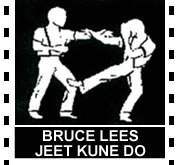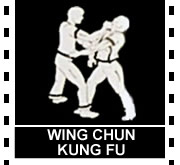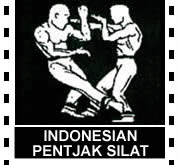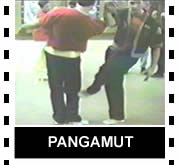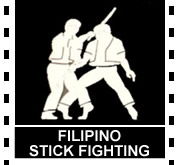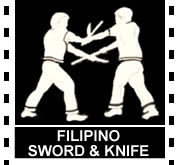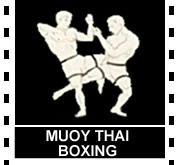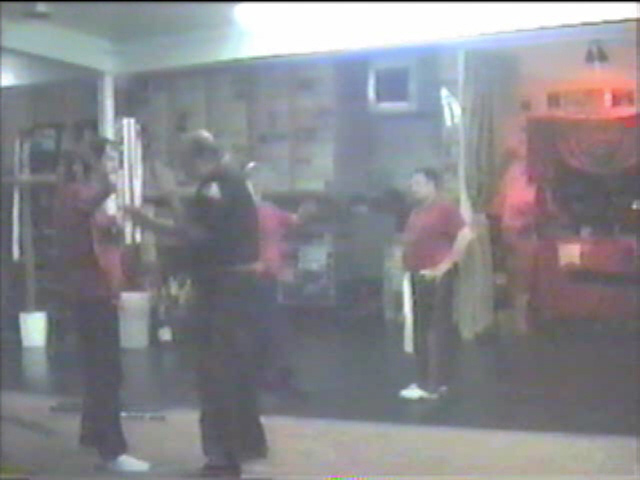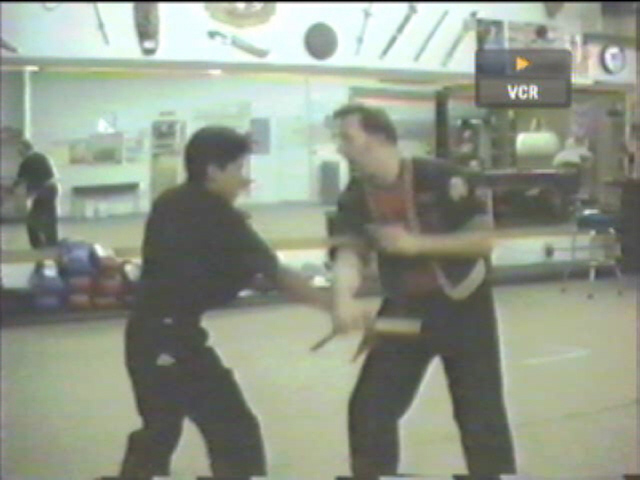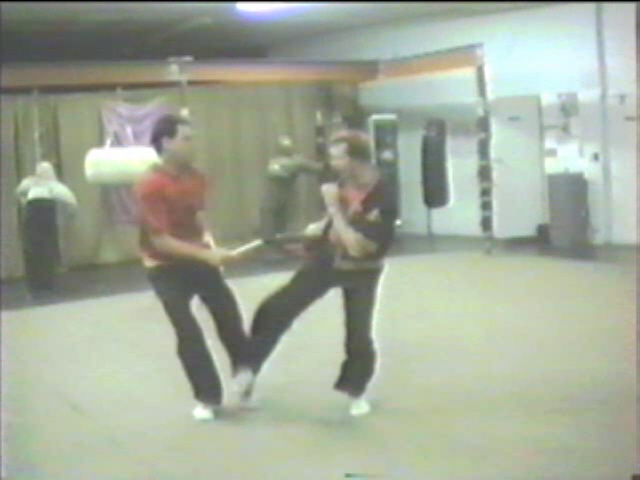
|
|
|
|
|
| |
|
|
|
| |
|
|
|
| |
|
|
|
|
|
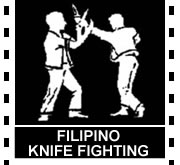 Filipino Knife/ daga fighting! Filipino Knife/ daga fighting!
Most famous of which is the Batangas Knife or Bolisong, related to the Olissipalid (palmstick) with two knives inside it; next palaminko (long knife); YoYo was also created by Filipino's as a type of perjectile knife, along with rattan wrist guards!
|
| |
|
|
| Most Filipino Knife fighting styles (knife vs knife) have three training stages
1.Beginning training with a round short rattan
doll rod.
2nd More advanced training is done with wood shaped as a single edge knife.
3rd Is with a wood handle metal blade, maybe beveled edges but
dulled demonstration knife.
All ways used in knife vs knife fighting can be broken down into three knife defense catagories.
1. Dungob- trap & stab. 2. Panastass- trap & slice or trap, pass & slice. 3. Palasuit - trap hook move attack & slice or stab.
A Student learns to use the empty hand deflecting, trapping entries in the knife
training (just as in empty hands). First empty hands defending against opponents 1-5 (up to 12 in most systems) knife angles of attack. It all falls under three types of
knife defenses. Tapic Tapic drilling is to learn to intercept a knife empty handed without being cut, develop fast flowing exchanges, learning to ente,r counter, follow up, manipulate, disarm or do a shove (returning the blade to sender). Also techniques against intimadation and robery self defense with Opponent Kunsi (holding you) at knife point. Then broken energy attack drilling, then flow knife drilling, then knife sparing (entering stab or slash and retreat
and return back & forth). Only after this was a student ready to drill or face, (used to the feel of) a live blade or taped
edge blade. However I know of some, such as Piki Tiursia that may start you with live blades.
Knife vs Knife training stages are the same. Knife to knife flow drills, then energy drilling. Then knife spar (Broken energy)
entering stabbing and slashing, retreat and renter. Ancient Filipino knife fighting was deceptive, often
using illusions, and distractions to gain the upper hand. If an experienced fighter the knife was usually
hidden from view in the way it was held. Both arms often using a fast (six count watic and labtick)
retracting and chambering across arm motions. Leading with the arm as bait. The opponent then tries to cut
it only to find it retracts as the other holding the knife replaces it to cut the soft areas of the arm or
leg and then retracts again and again or closes to incapacitate and kill. The preferred knife would be the
knife hidden within itself. It can then go on to involve double edge knives, two vs two knives, Knife and
sword or long and short. |
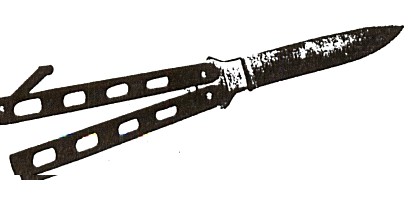
Manila Folder type Bolisong |

Weehawk style Balsiong |
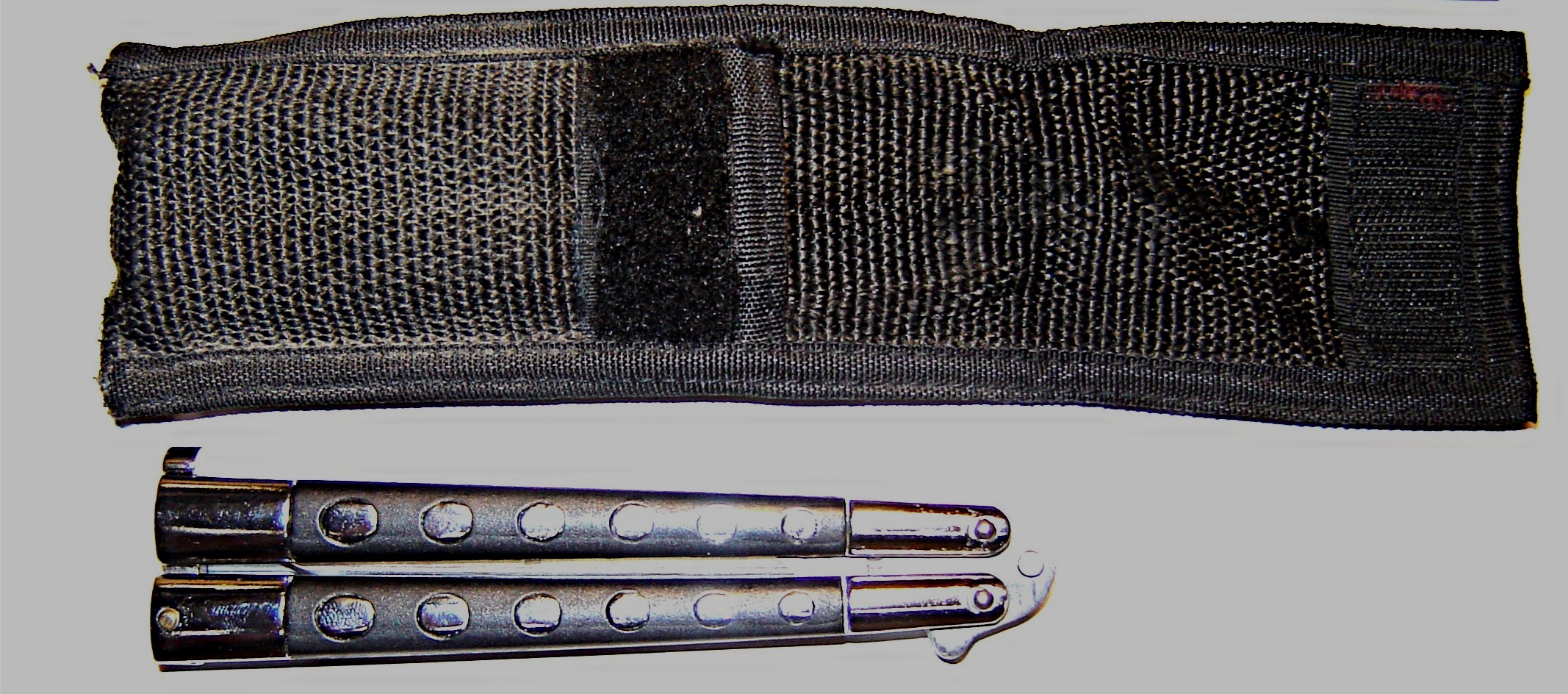
Balisong & quick draw sheath |
A Brief History:
The Balisong originally created in Batangas region of Luzon Philippines as the batangas knife, the USA nickname of the butterfly knife is actually incorrect as that name exists for a pair of Chinese short swords!
Class/ Seminar, begins with History of, Openings, Taping, Switching, counters, use for openings, knife work, relation to the Filipino hand techniques, Aerial openings.
Notorious Kali dates back before the Tang Dynasty; around even before 800 AD.
Influences - Malaya, Polynesian, Indonesian. At that time this Mystic Art was considered to be the deadliest fighting system in the World!
Kali from the Malay Archipelago (Malasia, Java, Indonesia, Mindanao- Lower Philippines) but it's scope and influence went far beyond. Kali known as the Arts of Arts came from the Kriss & Daga, Sword & Knife, Long & short. Knife work was an integral part of the system, attached to toes, Fingers as well as various hand held positions.
It's knife original ancestry was known as the Batangas knife then the Balisung; a Barrio in the Batangas Region of the Philippines. The Barrio was named this because it was the original birth place of the famous Balisung. The name Bali meant brake or broken; sung meaning horns. In fact the first versions were carved out of two halves of a broken horn then pined together to form a knife that could be hidden in it's self. It would resemble a palm stick (Olisi Palid term of the Central Philippines)!
Olisi Palid (palm stick) techniques could be very deceiving, it's
look was harmless, both ends barely sticking out of a closed fist using the empty hands techniques. Even more deadly when the Palid would brake open to reveal it's true danger in a flash of an eye!
The Blade was revealed and the Art of Kali became evident. The larger 18" version could be used as a stick and would open to a 35" sword and was said to be able to penetrate 29 men. Just prior to the last Spanish occupation of the Philippines there were stories of warriors who seemed to be like flowing buzzsaws. Their movements fast flowing nature, and the devastating death of any who came into it's path became larger then the men who held the Balisong. Kali was now feared more than ever. One such warrior in battle was said to have killed 29 solders before dying himself. The knife developed a nick name that lasted the entire Spanish occupation. They called it, and it became known to them as "Veinitinueve". Upon occupation the Art of Kali and the use or possession of the Balisong was outlawed and strictly enforced were possible. Any who broke this law were put to death in the center
courtyard of the Spanish forts or compounds located in that region for all to see! Many of these forts still stand and are toured today in the Philippines. It was death to all those suspected of practicing Kali or Kaliradman and death to any of their families and relatives.
|
Care & Safety - Keep blade sharp, clean and dry. Lubricate with a drop of fine oil at pivot points. Treat it with respect. It's not a screw driver or can opener. Be aware of it's dangerous nature even though you have used it a thousand times. It is not meant to be thrown at opponets.
Tape the edge and point with plastic electrical tape. Taping should always be done in the learning phase, no matter how smart you become any nick or worn tape exposing the sharpen area and point can cause a cut to the bone.
DAMA Bolisong class structure outline
Please note above the Balisong belt and strap mount case, Velcro tab release, it has a unique quick draw use!
Horizontal mounting; fast draw horizontal draw (to the single flip opening)
Vertical mount; (drop catch draw) Vertical up grab and open (double flip)Concealment - Shoulder strapping; wrist mounting, leg strap mounting, belted behind the back.
Discussion about Common cuts and mistakes in practising openings!
Grips - Forward thrusting (sak sak); (Ice Pick) Pakal, edge out 4 quarter gripping.
Review - basic Kali hand entries In and outside deflections, Guntings
Review - Olisi Palid entries from a forward punch or knife thrust.
3 types of knife defenses - Trap & stab (dumgob); Trap & slash (pannastas); Trap & swim (palasut)
2 types of Tapic Tapic of knife work; Serrada, Doce Pares.
Basic Openings
1. Single flip vertical - (close the same way) & Single flip knife pointing down ward (& close)
2. Single flip horizontal - (close the same way)
3. Pakal grip - Forward drop latch, catch (& closing )
4. Pakal grip - Drop & catch - ( hold latch side of handle & close )
5. Thumb index finger side flip opening (& close )
6. Double flip horizontal - (latch side out)(close the same way )(Dangerous for Non experienced)
7. Double flip horizontal - (latch side in) - (close the same way )
8. Double flip vertical - ( latch handle out & close )
9. Triple flip ( spin ) - (close the same way )
10.Triple flip vertical
11. Vertical sak sak Forward flip (latch out) back flip blunt edge to finger, drop catch in pakal grip.
12. Forward flip (latch out) back flip to finger - forward flip to sak sak grip
Next teach Aerial openings
Use of openings in countering, Follow ups, Stance changes to cause Technique, Body manipulation, Disarms,Shoves, return to sender.
|
|
|
Fear should be in the eye of the beholder, not you! Learn to defend your self for real; agianst a weapon or empty hands, at work, business, inside, outside, getting in a car, even on a plane! Learn fast effective street fighting technique and; Have No Fear! |
|


